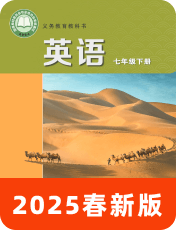英语冀教版(新)七年级下册课文目录
Unit 6 Being creative课文翻译及听力音频
Unit 6 Being creative 翻译:第六单元 充满创造力
Towards the end of this unit study, you will be able to: 翻译:在本单元学习结束时,你将能够:
talk about the steps of making a hand-made product; 翻译:谈论手工制品的制作步骤;
learn about traditional Chinese handicrafts; 翻译:了解中国传统手工艺品;
talk about DIY using reflexive pronouns. 翻译:用反身代词谈论手工制作。
One of my rules is: never try to do anything. 翻译:我的规则之一是:永远不要尝试做任何事情。
Just do it. 翻译:尽管去做就是了。
— Ani DiFranco 翻译:——安妮·迪弗兰科
Lesson 1 Let's DIY! 翻译:第1课 一起来做手工!
Read the questions and give your answers. 翻译:阅读问题并作出回答。
What is DIY? 翻译:DIY是什么?
Explain in your own words. 翻译:用自己的话解释一下。
When giving a gift, do you usually buy one or make one by yourself? 翻译:在送礼物的时候,你一般会买礼物还是自己动手制作礼物?
Why? 翻译:为什么?
Listen to the conversation and match the words with the pictures. 翻译:听对话录音,然后匹配图片和单词。
It's time for our shop class now. 翻译:现在该上手工课了。
I brought a lot of wood. 翻译:我带了很多木材过来。
Let's DIY! 翻译:一起来做手工吧!
What would you like to do with the wood? 翻译:你们想用这些木材做些什么?
Hmm... 翻译:嗯……
I'd like to make a bird house. 翻译:我想做一个鸟屋。
Why do you want to do that? 翻译:你为什么想做鸟屋?
I want to put it on a tree. 翻译:我想把它放到树上。
It will be a home for wild birds. 翻译:它会成为野鸟的家。
That's great! 翻译:主意不错!
What about you, Peter? 翻译:你呢,彼得?
I want to make a small table. 翻译:我想做一张小桌子。
It will be a gift for my grandparents. 翻译:当作礼物送给我的爷爷奶奶。
Good idea. 翻译:好主意。
And you, Tom? 翻译:你呢,汤姆?
I want to make a penguin. 翻译:我想做一只企鹅。
I will give it to my little sister. 翻译:我要把它送给我妹妹。
Good. 翻译:很好。
How do you plan to make it? 翻译:你打算怎么做?
I will draw a penguin on the wood. 翻译:我会在木材上画一只企鹅。
Then, I will cut out the shape. 翻译:然后再把形状裁出来。
I'm looking forward to seeing your great ideas come to life. 翻译:期待能看到你的创意变成现实。
Let's get started! 翻译:现在开始吧!
Learning Tips 翻译:学习小贴士
DIY is short for "do-it-yourself". 翻译:“DIY”是“do-it-yourself”的缩写形式。
It is quite popular throughout the world. 翻译:这一词汇在世界各地广为流传。
Jenny 翻译:詹妮
Peter 翻译:彼得
Tom 翻译:汤姆
little sister 翻译:妹妹
grandparents 翻译:爷爷奶奶
birds 翻译:小鸟
Listen to the conversation again and fill in the blanks. 翻译:再听一遍对话录音,然后填空。
I am Jenny. 翻译:我是詹妮。
We took a shop class last week. 翻译:上个星期,我们上了一堂手工课。
I made a bird house from wood. 翻译:我用木材做了一个鸟屋。
I put it on a tree and it became a home for wild birds. 翻译:我把它放在树上,它就成了野鸟的家。
Peter made a table for his grandparents and Tom made a penguin for his little sister. 翻译:彼得给他的爷爷奶奶做了一张桌子,汤姆给他的妹妹做了一只企鹅。
Let's DIY. 翻译:自己动手试试看。
What would you like to do? 翻译:你想做什么?
Talk with your partner. 翻译:与同伴说一说。
What would you like to do? 翻译:你想做什么?
I'd like to make... 翻译:我想做……
Why do you want to make that? 翻译:你为什么想做这个?
How do you plan to make it? 翻译:你打算怎么做?
Listen and repeat. 翻译:听录音并复述。
Write more words in each group. 翻译:给每个字母组合多写几个单词。
or /ɔ:/ 翻译:or /ɔ:/
forward 翻译:向前
corner 翻译:角落
oo /ʊ/ 翻译:oo /ʊ/
wood 翻译:木材
look 翻译:看
sh /ʃ/ 翻译:sh /ʃ/
shop 翻译:商店
wash 翻译:洗涤
dr /dr/ 翻译:dr /dr/
draw 翻译:画画
dream 翻译:梦想
Lesson 2 Paper cutting 翻译:第2课 剪纸
Talk about the pictures. 翻译:谈论图片内容。
What art form is this? 翻译:这是什么艺术形式?
What do these images mean? 翻译:这些图案有什么含义?
Read the passage and write true (T) or false (F). 翻译:阅读文章,然后判断正误。
Paper cutting is a traditional art form in China. 翻译:剪纸是中国的一种传统艺术形式。
I love it! 翻译:我喜欢剪纸!
When I was a child, I watched my grandma turn paper into flowers, trees, humans, animals and almost anything else. 翻译:小的时候,我看着奶奶把纸变成花、树、人、动物,几乎可以变成所有的东西。
She has magic hands. 翻译:她有一双神奇的手。
Her works are lively and beautiful. 翻译:她的剪纸栩栩如生,美轮美奂。
Later Grandma gave me a pair of scissors and taught me to make different paper-cuts. 翻译:后来,奶奶给了我一把剪刀,教我各式各样的剪纸。
We make paper-cuts with red paper to welcome the Chinese New Year. 翻译:我们用红纸剪窗花,以迎接中国新年的到来。
We put them on the walls and windows. 翻译:我们把窗花贴在墙壁和窗户上。
We hope they bring us good luck and happiness in the coming year. 翻译:我们希望这些剪纸能在来年给我们带来好运和幸福。
Paper cutting is creative. 翻译:剪纸是一种创意。
Do you want to do a paper-cut by yourself? 翻译:你想自己动手做剪纸吗?
You can use your imagination in your paper-cuts. 翻译:你可以在剪纸中发挥自己的想象力。
Try it now! 翻译:现在就来试试看吧!
Paper cutting is a new form of art. 翻译:剪纸是一种崭新的艺术形式。
Only elderly people like to make paper-cuts. 翻译:只有老年人才会喜欢剪纸。
You can use your imagination to decide what paper-cuts to make. 翻译:你可以发挥自己的想象力,决定制作什么样的剪纸作品。
Read the passage again and fill in the blanks. 翻译:再读一遍文章,然后填空。
Paper cutting is a traditional Chinese art form. 翻译:剪纸是中国的一种传统艺术形式。
Paper-cuts can be in different shapes, such as flowers, trees, humans and animals. 翻译:剪纸可以是各式各样的形状,例如花、树、人和动物。
We put red paper-cuts on the walls and windows to welcome the Chinese New year. 翻译:我们把红色的剪纸贴到墙壁和窗户上,以迎接中国新年的到来。
We hope they bring us good luck and happiness in the coming year. 翻译:我们希望这些剪纸能在来年给我们带来好运和幸福。
Paper cutting is creative. 翻译:剪纸是一种创意。
Do you want to make a paper-cut by yourself? 翻译:你想自己动手做剪纸吗?
Use your imagination. 翻译:发挥自己的想象力。
Try it now! 翻译:现在就来试试看吧!
Complete the conversation and then role-play it. 翻译:完成对话内容,然后进行角色扮演。
This paper-cut is lovely. 翻译:这幅剪纸真好看。
What is it? 翻译:这是什么?
It's a gift for you. 翻译:这是送给你的礼物。
Can you see the lady and the rabbit on the moon? 翻译:你能看到月亮上的女人和兔子吗?
I do! 翻译:能看到!
Thanks. 翻译:谢谢。
Is it about the famous Chinese story of Chang'e? 翻译:这是著名的中国故事“嫦娥奔月”吗?
Yes, that's right. 翻译:是的,你说的没错。
Do you know this story? 翻译:你知道这个故事吗?
Yeah, I like Chinese culture. 翻译:我知道,我喜欢中国文化。
Did you make it by yourself? 翻译:这是你自己做的吗?
Yes, my grandma taught me how. 翻译:对,我奶奶教我做的。
That's cool. 翻译:做得真好。
Why do people make red paper-cuts? 翻译:为什么人们要做红色的剪纸?
They invite good luck and happiness. 翻译:它们会带来好运和幸福。
This is a really great form of art. 翻译:这真是一种重大的艺术形式。
Did you make it by yourself? 翻译:这是你自己做的吗?
This paper-cut is lovely. 翻译:这幅剪纸真好看。
They invite good luck and happiness. 翻译:它们会带来好运和幸福。
Is it about the famous Chinese story of Chang'e? 翻译:这是著名的中国故事“嫦娥奔月”吗?
What other Chinese art forms do you know? 翻译:你还知道哪些中国艺术形式?
Talk with your partner. 翻译:与同伴说一说。
Lesson 3 What is in the box? 翻译:第3课 箱子里面有什么?
Look at the pictures and answer the questions. 翻译:观察图片,然后回答问题。
What animals are they? 翻译:这些是什么动物?
Can you make them? 翻译:你会制作吗?
Read the conversation and underline what is in the box. 翻译:阅读对话,然后用下划线画出箱子里面有什么。
What's in the box? 翻译:箱子里面有什么?
Can you guess? 翻译:猜猜看。
No idea. 翻译:猜不到。
Come on! 翻译:快告诉我!
What is it? 翻译:是什么?
Let's open the box together. 翻译:我们一起打开箱子看看吧。
Wow! 翻译:哇!
It's a cute monkey and some costumes! 翻译:是一只可爱的猴子,还有几件衣服。
I made the monkey out of clay. 翻译:我用黏土做了这只猴子。
I painted it myself. 翻译:我自己给它涂上颜色。
That's wonderful. 翻译:真好看。
Did you make the costumes by yourself? 翻译:这些衣服是你自己做的吗?
Yes, I used some old cloth. 翻译:是的,我用旧布做的。
It's easy. 翻译:很简单。
That's great. 翻译:真好。
Can I put the costumes on the monkey? 翻译:我能给这只猴子穿上衣服吗?
Go ahead. 翻译:请吧。
Done! 翻译:弄好了!
Let's see... 翻译:瞧瞧……
It's the Monkey King! 翻译:是美猴王!
The Dragon Boat Festival is coming. 翻译:端午节就快到了。
Let's make some small dragon boats by ourselves. 翻译:我们自己动手做几条小龙舟吧。
We can give them to our friends. 翻译:我们可以把它们送给朋友。
Good idea! 翻译:好主意!
DIY is fun and creative. 翻译:自己动手既有趣又有创意。
Read the conversation again and fill in the blanks. 翻译:再读一遍对话,然后填空。
Li Lin had a box. 翻译:李琳有一个箱子。
Wang Mei was eager to find out what was inside. 翻译:王梅迫切地想知道里面有什么。
So they opened it. 翻译:于是她们打开了箱子。
They found a cute monkey and some costumes. 翻译:她们发现有一只可爱的猴子和几件衣服。
Li Lin used clay to make the monkey and painted it herself. 翻译:李琳用黏土做了这只猴子,并且自己给猴子涂上了颜色。
She used some old cloth to make the costumes. 翻译:她用了一些旧布来做衣服。
Then Wang Mei put the costumes on the monkey. 翻译:接着,王梅给猴子穿上了衣服。
It was the Monkey King. 翻译:那是一只美猴王。
DIY is fun and creative. 翻译:自己动手既有趣又有创意。
They want to make some small dragon boats by themselves for their friends. 翻译:她们想自己动手做几条小龙舟送给她们的朋友。
Read the sentences and complete the table. 翻译:读句子,然后填写表格。
I painted it myself. 翻译:我自己给它涂上了颜色。
Let's make some dragon boats by ourselves. 翻译:我们自己动手做几条龙舟吧。
We use a reflexive pronoun to emphasize that someone does something without any help. 翻译:反身代词用来强调某人在没有任何帮助的情况下完成某事。
I 翻译:我
you 翻译:你
he 翻译:他
she 翻译:她
it 翻译:它
we 翻译:我们
you 翻译:你们
they 翻译:他们;她们;它们
myself 翻译:我自己
Complete the conversation with the words from the table above. 翻译:用上表中的单词完成对话。
How was the birthday party for your grandpa yesterday? 翻译:昨天你爷爷的生日聚会怎么样?
We enjoyed ourselves at the party. 翻译:我们在聚会上玩得很开心。
The scarf is beautiful. 翻译:这条围巾好漂亮。
Is it a gift from your mother? 翻译:是你妈妈送你的礼物吗?
Yes, my mum made it herself. 翻译:是的,这是我妈妈自己织的围巾。
You are a good cook. 翻译:你的厨艺真好。
The food smells delicious. 翻译:饭菜闻起来很香。
Thank you. 翻译:谢谢。
Help yourself to some fish, Jack. 翻译:来点鱼吧,杰克。
Do you need to drive David to school? 翻译:你要开车送戴维去学校吗?
No, he is old enough to go by himself. 翻译:不用,他已经到了可以自己去上学的年纪了。
Lesson 4 Chinese kites 翻译:第4课 中国的风筝
Do you like to fly kites? 翻译:你喜欢放风筝吗?
Where do you fly kites? 翻译:你在哪里放风筝?
Read the passage and answer the questions. 翻译:阅读文章,然后回答问题。
Kites are a traditional form of art in China. 翻译:风筝是中国的一种传统艺术形式。
They have a history of about 2,300 years. 翻译:风筝有着大约2300年的历史。
Traditional kite patterns can mean many things, including good luck, long life, and happiness. 翻译:传统的风筝样式寓意很多,包括好运、长寿和幸福。
People fly kites to express their wishes for a better life. 翻译:人们通过放风筝来表达自己对美好生活的愿景。
Last week, there was a kite festival at our school. 翻译:上个星期,我们学校举办了一次风筝艺术节。
We were happy to be able to make kites ourselves. 翻译:我们很开心,能够自己动手制作风筝。
My group made a special one. 翻译:我们小组做了一个特别的风筝。
First, we got different materials: special paper, a string, bamboo sticks, scissors, and glue. 翻译:首先,我们准备了不同的材料:制作风筝的专用纸、细绳、竹条、剪刀和胶水。
Next, we cut the paper into a shape. 翻译:接着,我们把纸剪成各种形状。
Then we connected the string to the main part of the kite. 翻译:之后,我们用绳子把风筝的主体部分串连起来。
Finally, we drew beautiful patterns on our kite. 翻译:最后,我们在风筝上画出漂亮的图案。
On the day of the festival, we had so much fun. 翻译:在风筝艺术节那天,我们玩得很开心。
There were many beautiful kites in the sky. 翻译:天空中出现了许多漂亮的风筝。
They came in many different shapes. 翻译:它们形状各异。
Some kites looked like birds, some looked like butterflies, and some looked like fish. 翻译:有的像小鸟,有的像蝴蝶,还有的像鱼。
Guess what our kite was. 翻译:猜猜我们的风筝是什么样的?
It was a dragon! 翻译:是一条龙!
We won a special award at the festival. 翻译:我们在风筝艺术节上获得了特别奖。
How far back does the history of kites go? 翻译:风筝的历史可以追溯到什么时候?
What do you need to make a kite? 翻译:制作风筝需要什么材料?
What shape of kite did the author's group make this year? 翻译:作者所在的小组今年制作了什么形状的风筝?
Find the key information from the passage to fill in the table. 翻译:在文中找到重点信息填入表格。
Main idea 翻译:主旨
Key information (2—4 sentences) 翻译:重点信息(两到四句话)
Paragraph 1 翻译:第一段
Introduction to the Chinese kite 翻译:中国风筝的介绍
Paragraph 2 翻译:第二段
Steps to make a kite 翻译:制作风筝的步骤
Paragraph 3 翻译:第三段
Shapes of kites 翻译:风筝的形状
Do you know the steps to make a kite? 翻译:你知道制作风筝的步骤吗?
Put the sentences in the correct order. 翻译:将下列句子按正确的顺序排列。
Find special paper, strings, bamboo sticks, scissors, and glue. 翻译:找制作风筝的专用纸、细绳、竹条、剪刀和胶水。
Draw beautiful patterns on the kite. 翻译:在风筝上画出漂亮的图案。
Connect the string to the main part of the kite. 翻译:用绳子把风筝的主体部分串连起来。
Use scissors to cut the paper into a shape. 翻译:用剪刀把纸剪成各种形状。
What kind of handicraft do you want to make? 翻译:你想制作什么样的手工艺品?
Search online for information and write down the steps. 翻译:上网搜索相关信息,并写出制作步骤。
First 翻译:首先
Next 翻译:接着
Then 翻译:之后
Finally 翻译:最后
Lesson 5 How to make a poster 翻译:第5课 如何制作海报
Project 翻译:专题研究
Look at the poster. 翻译:观察海报。
What are the major parts of a poster? 翻译:海报有哪些主要部分?
Read the passage and use the keywords to label the poster. 翻译:阅读这段文字,用关键词标注海报。
TRADITIONAL CHINESE FESTIVAL 翻译:中国传统节日
DRAGON BOAT FESTIVAL 翻译:端午节
The fifth day of the fifth month in the Chinese lunar calendar 翻译:农历五月初五
9 a.m. -- 5 p.m. 翻译:上午9点至下午5点
Shangde Lake 翻译:尚德湖
Dragon Boat Race and Zongzi Making 翻译:赛龙舟,包粽子
Best Wishes for Health and Happiness! 翻译:端午安康!
picture 翻译:图片
Do you know how to make a poster? 翻译:你知道如何制作海报吗?
Let's try! 翻译:快来试试看!
Step 1: Choose a subject. 翻译:步骤1:选择一个主题。
You can discuss with your partner. 翻译:你可以与同伴讨论。
Step 2: Search the internet for information on the subject. 翻译:步骤2:上网搜索与主题相关的信息。
Step 3: Choose an eye-catching title. 翻译:步骤3:选一个醒目的标题。
Step 4: Take notes on important points. 翻译:步骤4:记录要点信息。
Make those points clear and short. 翻译:要点需简明扼要。
Step 5: Prepare materials. 翻译:步骤5:准备材料。
Pencils, markers, scissors, paper, and rulers should be on your list. 翻译:铅笔、记号笔、剪刀、纸张和直尺都应该备好。
Step 6: Add pictures and words. 翻译:步骤6:添加图片和文字。
Draw or cut out some pretty pictures. 翻译:画一些漂亮的图片或剪出一些图案。
Write information under the title. 翻译:在标题下方写上相关信息。
All in all, your poster should have a subject, an eye-catching title, useful information, nice pictures, and a slogan. 翻译:总之,你的海报应该包含一个主题、一个醒目的标题、有用的信息、漂亮的图画和一个标语。
The key to a good poster is to organise the information well. 翻译:一张好的海报关键在于能组织好信息。
Look at the poster and answer the questions. 翻译:观察海报,然后回答问题。
Discuss with your partner. 翻译:与同伴讨论一下。
What is on the poster? 翻译:海报上面有什么?
What is the subject of the poster? 翻译:海报的主题是什么?
Where can we do paper cutting on July 19? 翻译:7月19日在哪里进行剪纸活动?
What is the purpose of the club? 翻译:社团的目的是什么?
Chinese Culture Club Activity 翻译:中国文化社团活动
Paper-cut Works 翻译:剪纸作品
Date: July 19 翻译:日期:7月19日
Place: Art Building Floor 3, Room 2 翻译:地点:艺术大楼3层2号厅
Join us! 翻译:加入我们!
Let your imagimation run with a piece of paper and a knife or a palr of scissors. 翻译:用小刀或剪刀,在纸上尽情发挥你的想象力。
Work in groups. 翻译:小组合作。
Design a poster about an activity. 翻译:设计一张活动海报。
Discuss and complete the table. 翻译:讨论并完成表格。
What's the subject of your activity? 翻译:你们组的活动主题是什么?
What's the title? 翻译:标题是什么?
What's the useful information? 翻译:有用的信息是什么?
What pictures will you include? 翻译:你们会提供什么图片?
What's your poster's slogan? 翻译:海报的标语是什么?
Make your poster and present it to the class. 翻译:制作海报,并向全班同学展示。
This is the poster of our group... 翻译:这是我们小组的海报……
Understanding cultures Lu Ban — the legendary master carpenter 翻译:文化理解:鲁班——传奇木匠大师
Read the passage and answer the questions. 翻译:阅读文章,然后回答问题。
Lu Ban, or Gongshu Ban, was born in the State of Lu. 翻译:鲁班,又名公输班,生于鲁国。
When he was young, Lu Ban worked with his family. 翻译:鲁班年轻时跟随家人一起劳作。
He was a quick learner. 翻译:他学东西很快。
He was also creative. 翻译:他还很有创造力。
He had great interest in inventing new tools. 翻译:他对发明新工具有着浓厚的兴趣。
One day, Lu Ban cut his finger on a leaf. 翻译:一天,鲁班的手指被一片叶子割伤。
He saw that the leaf had teeth on its edge. 翻译:他看见叶片边缘呈齿状。
He realised that a toothed edge could make cutting easier. 翻译:他意识到,有齿的边缘能让切割变得更容易。
In the following days, Lu Ban invented the first saw in history. 翻译:在接下来的几天,鲁班发明了历史上第一把锯子。
Lu Ban invented many other things, such as grappling hooks and rams for fighting on boats and the "cloud ladder" for attacking walled towns. 翻译:鲁班还发明了许多其他东西,比如水战用的钩强和夯锤,以及攻城用的“云梯”。
He also helped build many bridges and palaces in the State of Lu and other states. 翻译:他还帮鲁国和各诸侯国建造了许多桥梁和宫殿。
He made a big difference in China. 翻译:他对中国产生了极大的影响。
What did you learn after reading the third paragraph? 翻译:读完第三段,你有什么收获?
What is a "cloud ladder"? 翻译:“云梯”是什么?
Learning Tips 翻译:学习小贴士
In Chinese, we have the phrase ban men nong fu. 翻译:中国有个成语叫“班门弄斧”。
This phrase has something to do with Lu Ban. 翻译:这个成语与鲁班有关。
What does it mean? 翻译:它是什么意思呢?
Some people think we need to ban men nong fu sometimes. 翻译:一些人认为,人们有时候需要“班门弄斧”。
Do you agree with them? 翻译:你认同这一观点吗?
The Four Great Inventions in ancient China greatly promoted the development of China and the world. 翻译:中国古代的“四大发明”极大地推动了中国和世界的发展。
Do you know what they are? 翻译:你知道“四大发明”是什么吗?
Look at the pictures and match them to their names. 翻译:看图片,并将图片与对应名字连起来。
Then discuss with your classmates. 翻译:然后与同学们进行讨论。
paper-making 翻译:造纸
printing 翻译:印刷术
compass 翻译:指南针
gunpowder 翻译:火药
There are many creative inventors in the world. 翻译:世界上有许多富有创造力的发明家。
Work in groups and introduce one of them. 翻译:以小组为单位,介绍其中一位。
The following questions may help you: 翻译:你可以借助下列问题:
What did he/she invent? 翻译:他/她发明了什么?
What is his/her field of interest? 翻译:他/她的兴趣领域是什么?
Name of the inventor 翻译:发明家的名字
What can you learn from him/her? 翻译:你能从他/她身上学到什么?
Self-check 翻译:自我检测
I can talk about the steps of making a hand-made product: 翻译:我能谈论手工制品的制作步骤:
First, we got different materials. 翻译:首先,我们准备了不同的材料。
Next, we cut the paper into a shape. 翻译:接着,我们把纸剪成一个形状。
Finally, we drew beautiful patterns on our kite. 翻译:最后,我们在风筝上画出漂亮的图案。
I can talk about traditional Chinese handicrafts: 翻译:我能谈论中国传统手工艺品:
Paper cutting is a traditional art form of in China. 翻译:剪纸是中国的一种传统艺术形式。
People fly kites to express their wishes for a better life. 翻译:人们通过放风筝来表达自己对美好生活的愿景。
l can talk about DIY using reflexive pronouns: 翻译:我能用反身代词来谈论手工制作:
I made the monkey out of clay. 翻译:我用黏土做了这只猴子。
I painted it myself. 翻译:我自己给它涂上了颜色。
Did you make the costumes by yourself? 翻译:这些衣服是你自己做的吗?
Improvement needed: 翻译:需要改进的地方:
Fun Time 翻译:轻松一刻
DIY 翻译:自己动手
In a world of imagination, where dreams unfold, 翻译:在想象的世界里,梦想就此展开;
DIY becomes an adventure, a story yet untold. 翻译:DIY变成一场冒险,一个尚未被讲述的故事。
With tools and creativity, we take our stand, 翻译:我们以工具和创意为本,
Transforming ordinary things with our hands. 翻译:用双手改造平凡的事物。
Scissors cut, glue sticks, and paintbrushes dance, 翻译:剪刀剪,胶水粘,画笔翩然起舞,
As we craft and create, taking every chance. 翻译:我们精心创作,抓住每一个机会。
Piece by piece, we shape our vision true, 翻译:我们一步步走,实现自己的愿望;
DIY magic, bringing dreams to life anew. 翻译:DIY的魔法,让梦想重获新生。
最新学习记录 更新时间:2025-11-28 15:08:50



 切换教材
切换教材